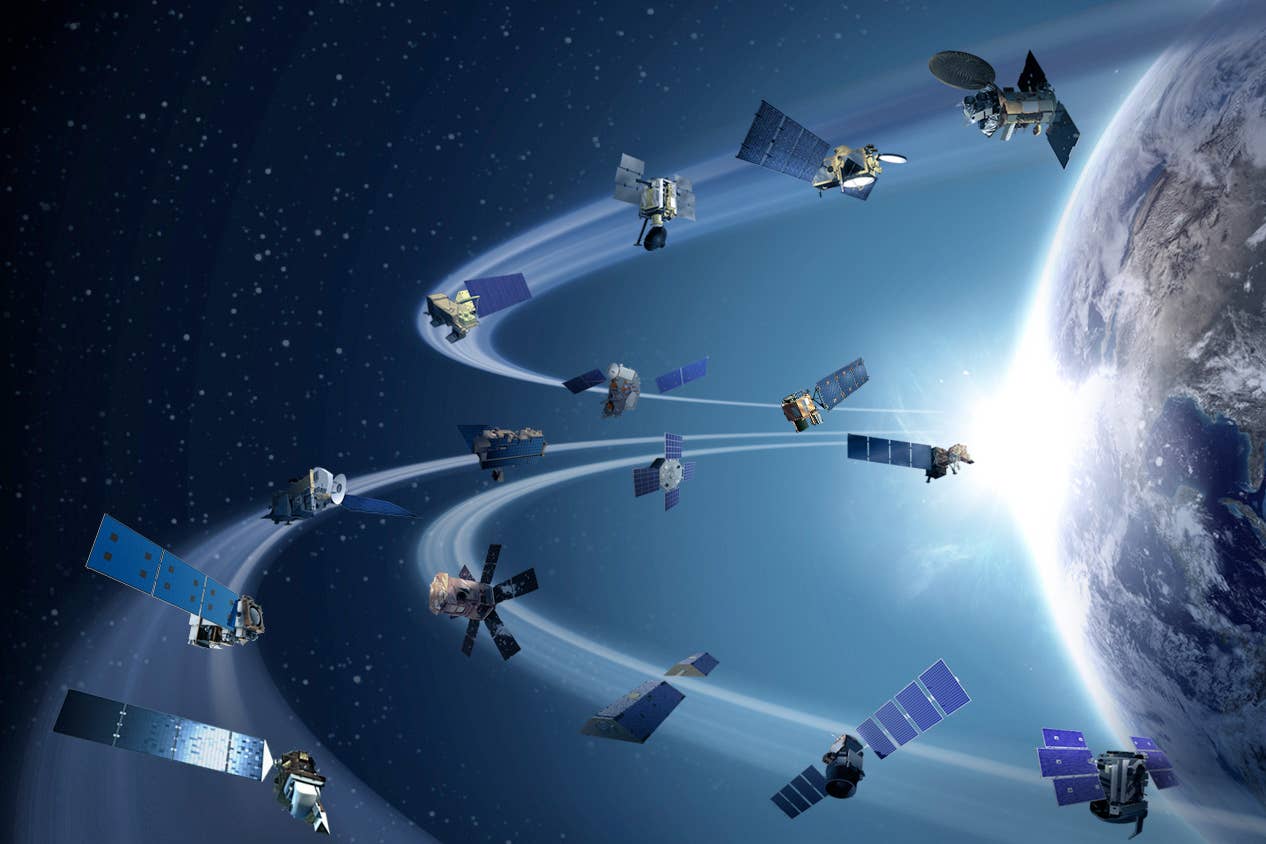Dozens of Starlink Satellites Hit By Geostorm, Expected to Fall Toward Earth
The satellites were launched last week and most are expected to burn up on re-entry.

The satellites affected are not expected to reach the Earth’s surface. [Illustration Courtesy: NASA
Late Tuesday night, Elon Musk’s SpaceX reported that up to 40 of its Starlink satellites, launched last week, were hit by a geomagnetic storm and are expected to re-enter Earth’s atmosphere.
SpaceX launched 49 Starlink satellites on February 3, using a Falcon 9 rocket from the Kennedy Space Center in Florida. The satellites reached their targeted orbit and achieved controlled flight.
But on Friday, a geomagnetic storm hit the satellites, greatly reducing their ability to sustain orbital speeds.
What Are Geomagnetic Storms?
Geomagnetic storms are created when solar wind interacts with Earth’s magnetic field, causing a dramatic increase in pressure and heat in the upper layers of the atmosphere.
“These storms cause the atmosphere to warm and atmospheric density at our low deployment altitudes to increase,” SpaceX said in a statement. “In fact, onboard GPS suggests the escalation speed and severity of the storm caused atmospheric drag to increase up to 50 percent higher than during previous launches.”
SpaceX, with the help of the Space Force’s 18th Space Control Squadron and LeoLabs, attempted to take corrective actions to keep the satellites in orbit.
Unfortunately, the increased drag from the storm slowed down the satellites, causing them to plummet back toward Earth. Currently, there is no concern of any of the 40 satellites making it to Earth’s surface, as they will completely burn up on reentry.
According to SpaceX, the company has contingencies for unsuccessful deployments.
“SpaceX deploys its satellites into these lower orbits so that in the very rare case any satellite does not pass initial system checkouts it will quickly be deorbited by atmospheric drag. While the low deployment altitude requires more capable satellites at a considerable cost to us, it’s the right thing to do to maintain a sustainable space environment,” SpaceX reported.
This situation comes on the heels of a bitter debate between the U.S. and China over SpaceX’s ever-growing fleet of Starlink satellites.
In December, China sent a letter to the United Nations, detailing how the China Space Station had to conduct evasive maneuvers to avoid colliding with Starlink satellites that moved near its orbit.
“The deorbiting satellites pose zero collision risk with other satellites and by design demise upon atmospheric reentry—meaning no orbital debris is created and no satellite parts hit the ground,” SpaceX said. “This unique situation demonstrates the great lengths the Starlink team has gone to ensure the system is on the leading edge of on-orbit debris mitigation.”
According to SpaceX, the 40 satellites have already begun their descent, or will do so very soon.

Subscribe to Our Newsletter
Get the latest FLYING stories delivered directly to your inbox






